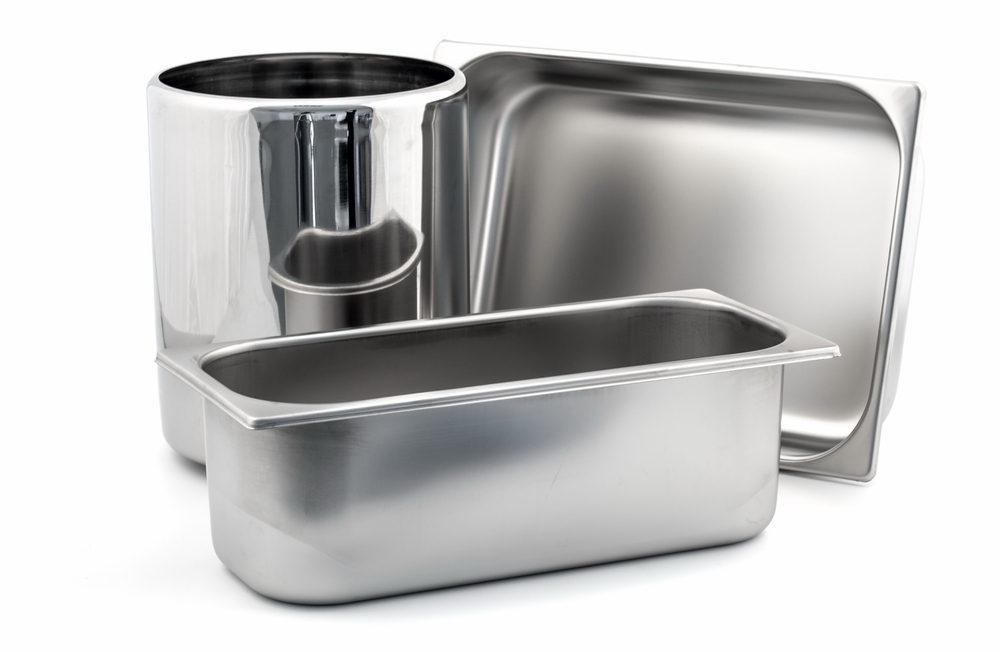Your Ultimate Guide on How to Sell Ice Cream on the Street
By Hamza Benhlima · 14. February 2024
Interested in turning your passion for frozen delights into a profitable street venture?
In this guide, we’ll walk you through the essentials of launching your very own street ice cream business, from choosing your ice cream🍨 model and navigating local regulations to marketing strategies that attract swarms of customers.
Whether you’re pushing a cart, driving a van, or setting up a stall, we’ll provide actionable advice to help you get started and scoop your way to success.
Choosing the Right Ice Cream Selling Model

Choosing the right model for your ice cream business is the first step towards success.
While it might seem like all ice cream vans are the same, the reality is a bit more complex.
From traditional vans to nimble carts and bikes to customized trucks, each model offers unique advantages and challenges.
Ice Cream Vans
Ice cream vans are a classic choice for a reason.
Their flexibility allows you to reach different customer bases and operate at flexible hours, while their relatively low start-up costs can yield high profit margins.
However, choosing this model means you’ll have to navigate some challenges.
Limited storage means a limited variety of flavors and toppings, and maintenance costs can affect profitability.
But with careful planning, an ice cream van can be a solid foundation for your mobile ice cream business.
Ice Cream Carts/Bikes
If you’re looking for a more nimble option than a food truck, consider ice cream carts or bikes.
These mobile models can easily navigate to high foot traffic areas like events, festivals, and parks.
They also come with lower costs and the opportunity for customization, allowing you to cater to various tastes and dietary preferences.
Plus, their operational features often include built-in storage options, an umbrella for shade, and a freezer box to ensure the ice cream stays properly chilled.
Customized Ice Cream Trucks
If you’re aiming to provide a distinct experience, the possibilities are endless with customized ice cream trucks.
These trucks can be equipped with specialized freezers and inbuilt equipment, allowing you to cater to diverse customer preferences.
Moreover, the design of these trucks can truly reflect your brand, making each scoop of ice cream a memorable experience for your customers.
Essential Equipment and Supplies

After settling on a business model, the next step is outfitting your ice cream vehicle.
From freezers and coolers to scoops, cones, and napkins, you’ll need certain essentials to serve your delicious ice cream.
Early on, focus on purchasing the necessary accessories and equipment.
You might even consider hiring equipment instead of buying to manage initial costs effectively.
Cold Storage
Cold storage is crucial for any ice cream business. Ice cream should be stored between -12 and -24 degrees Celsius to prevent ice crystal formation and preserve texture.
Whether you choose dipping freezers for hand-packed items or display freezers for pre-packed goods, it’s essential to maintain optimal temperatures.
Keep in mind that a dependable vehicle with an appropriate freezer is key for selling ice cream on the street.
Serving Tools
Equally important are the tools you use to serve your ice cream.
Some essential utensils include:
- Ice cream scoops
- Dippers
- Spades
- Topping spoons
Power Source
When it comes to powering your ice cream business, the future looks bright and green.
Thanks to larger capacity batteries and more efficient equipment, the feasibility of electric ice cream vans is increasing.
An electric van can feasibly run fridge and ice cream machine equipment for 10 hours on a 40 kWh battery, with power to spare for driving over 100 miles.
Modern electric-only soft serve ice cream machines that require around 2kW can be sustained by current electric vans, which allows for all necessary equipment to function for a full day without relying on an idling engine.
Selecting the Perfect Location

Now that you have your equipment sorted, it’s time to scout for the perfect location. High-traffic locations like:
- restaurants
- parks
- athletic fields
- beaches
- schools
are beneficial for ice cream sales. Ensure your sale points are conveniently reachable for pedestrians and cars alike.
Providing a place for customers to sit and enjoy their ice cream can lead to a better customer experience and potentially longer visits, which could boost sales💰.
Serving ice cream in an area with little to no competition allows for better sales opportunities.
Scouting High-Foot Traffic Areas
Identifying areas with high pedestrian traffic is pivotal for enhancing ice cream sales.
The volume of potential customers directly influences your revenues.
Optimal locations for ice cream sales tend to be where families and children gather, such as:
- near restaurants
- parks
- athletic fields
- beaches
- schools
Navigating Local Regulations
It’s vital to comprehend local regulations when choosing a site for your business. Here are some key points to consider:
- Street trading licenses are required for selling ice cream on public highways.
- Specific requirements for obtaining these licenses can vary depending on the local council.
- If you plan to sell ice cream on private land, a street trading license is typically not required, but you’ll still need permission from the landowner.
Be aware that local regulations, or ice cream van rules, may impose limitations on where ice cream vans, operated by ice cream sellers, can park and sell, with possible prohibitions on vending near sensitive areas such as schools, hospitals, and playgrounds.
Additionally, some areas may have restrictions on the use of ice cream van chimes to minimize noise disturbances.
It’s essential to consider these factors when obtaining ice cream van insurance.
Building Relationships with Local Businesses
Forming partnerships with local businesses can significantly impact your ice cream venture.
Strategic placements of your ice cream van or cart near local businesses with high customer turnover can greatly enhance visibility and customer access.
Collaborating with local businesses for mutual benefits can include sharing a portion of sales or offering special deals during events.
You can also consider organizing unique community events in partnership with local businesses to foster engagement and create shareable moments.
Legal and Regulatory Requirements

Inaugurating a street ice cream business necessitates adherence to numerous legal and regulatory directives. These include:
- Registering your business with state or city agencies
- Choosing a legal business structure
- Abiding by tax regulations
- Registering with the local authority at least 28 days before you start trading
- Securing the proper licenses and permits
- Complying with food hygiene regulations
Also, remember insurance is crucial. Here are some necessary steps:
- Acquiring business vehicle insurance for legal defense and compensation payouts if sued
- Obtaining public and product liability insurance
- Registering with the local council for a food hygiene inspection
Licenses and Permits
The required license for selling ice cream🍧 on the street can vary depending on the selling model.
Here are the steps to obtain the necessary licenses:
- Street trader’s licenses are required for bikes, vans, or movable stalls. Market trader’s licenses are needed for market settings.
- To obtain a street trading licence, you must contact your local council or apply online.
- Pay the associated fee for the license.
- Ensure you renew your license as required.
- If you’re handling dairy products, you may need special approval as a food establishment.
Food Safety and Hygiene
Food safety and hygiene are paramount in the ice cream business.
A food management system based on Hazard Analysis and Critical Control Point (HACCP) principles is mandatory for compliance with food hygiene regulations in all food businesses.
If you’re selling pre-packaged ice cream and lollies, you’re subject to less detailed HACCP requirements.
Insurance and Liability
It is critical for your ice cream business to have the right insurance in place to ensure proper protection.
Without the appropriate insurance, your business may be vulnerable to financial risks and liabilities.
Here are some types of insurance you should consider:
- Employer’s Liability insurance to protect against claims from employees injured at work
- Public Liability insurance to cover potential legal costs if a member of the public gets injured or if there’s property damage as a result of your business operations
- Insurance for claims of allergic reactions, food poisoning, and employee accidents
- Insurance for equipment breakdown
- Insurance for loss or theft of stock
Having these types of insurance will help safeguard your ice cream business and give you peace of mind.
Marketing and Promotion Strategies

Marketing📈 plays an integral role in your ice cream venture.
Here are some strategies to effectively market your business:
- Allocate ten percent of your expected revenue towards advertising.
- Maintain an active presence on social media.
- Create referral programs that incentivize word-of-mouth.
- Implement regular promotions.
Engaging customers through these strategies will help promote your ice cream business.
Bear in mind that first impressions are significant – uphold the cleanliness of your truck/cart/trike and make sure your staff presents itself neatly.
Branding and Truck Design
In the fiercely competitive ice cream truck market, original branding and novel packaging are essential for distinguishing your business from competitors.
Your branding should resonate with your target audience, reflecting their preferences in your marketing message.
Make sure your value proposition is easily understood and memorable, reinforcing why consumers should choose you over other competitors.
A strategic branding plan is imperative for guiding your marketing efforts and measuring their effectiveness.
Social Media and Online Presence
Developing an attractive online store, complete with persuasive product descriptions and straightforward ordering, can elevate the customer experience and boost sales.
Applying search engine optimization strategies can help your business rank higher in search results and attract more local customers searching for ice cream options online.
Engaging with customers on social media through high-quality images, sharing behind-the-scenes content, and posting customer testimonials can create a vibrant community around your ice cream brand.
Running interactive social media contests and campaigns while encouraging user-generated content with a brand-specific hashtag can increase visibility and strengthen your brand identity.
Building an email list and segmenting it based on customer preferences allows for personalized marketing that can resonate more strongly with ice cream lovers.
Collaborating with local influencers can authentically promote your ice cream business to their followers, leading to higher engagement and potential new customers.
Utilizing e-commerce platforms opens the door for doorstep delivery services, making it more convenient for customers and helping to expand the geographical reach of your business.
Summary
In conclusion, starting an ice cream business on the street is a sweet and rewarding venture.
It involves selecting the right business model, equipping your vehicle with essential tools, securing a perfect location, and complying with legal and regulatory requirements.
Effective marketing strategies, community engagement, and a diverse range of ice cream🍨 offerings can help your business stand out and thrive.
Frequently Asked Questions
Do you need a license to sell ice cream on the streets?
Yes, to legally sell ice cream on the streets in the UK, you are required to obtain a street trading license.
This is necessary whether you’re setting up a stationary stall or operating a mobile ice cream van.
However, if you possess a pedlar’s certificate, you might be exempt from requiring a street trading license, but it’s essential to check with your local council as regulations can vary by location.
Applying for and confirming the specific requirements in your area is the best course of action to ensure you’re in compliance with local laws.
Do ice cream vans need a street trading licence?
Yes, ice cream vans generally need a street trading license from the local council to operate.
Is an ice cream van profitable?
Absolutely! Running an ice cream van can be highly profitable due to low start-up costs and high profit margins.

